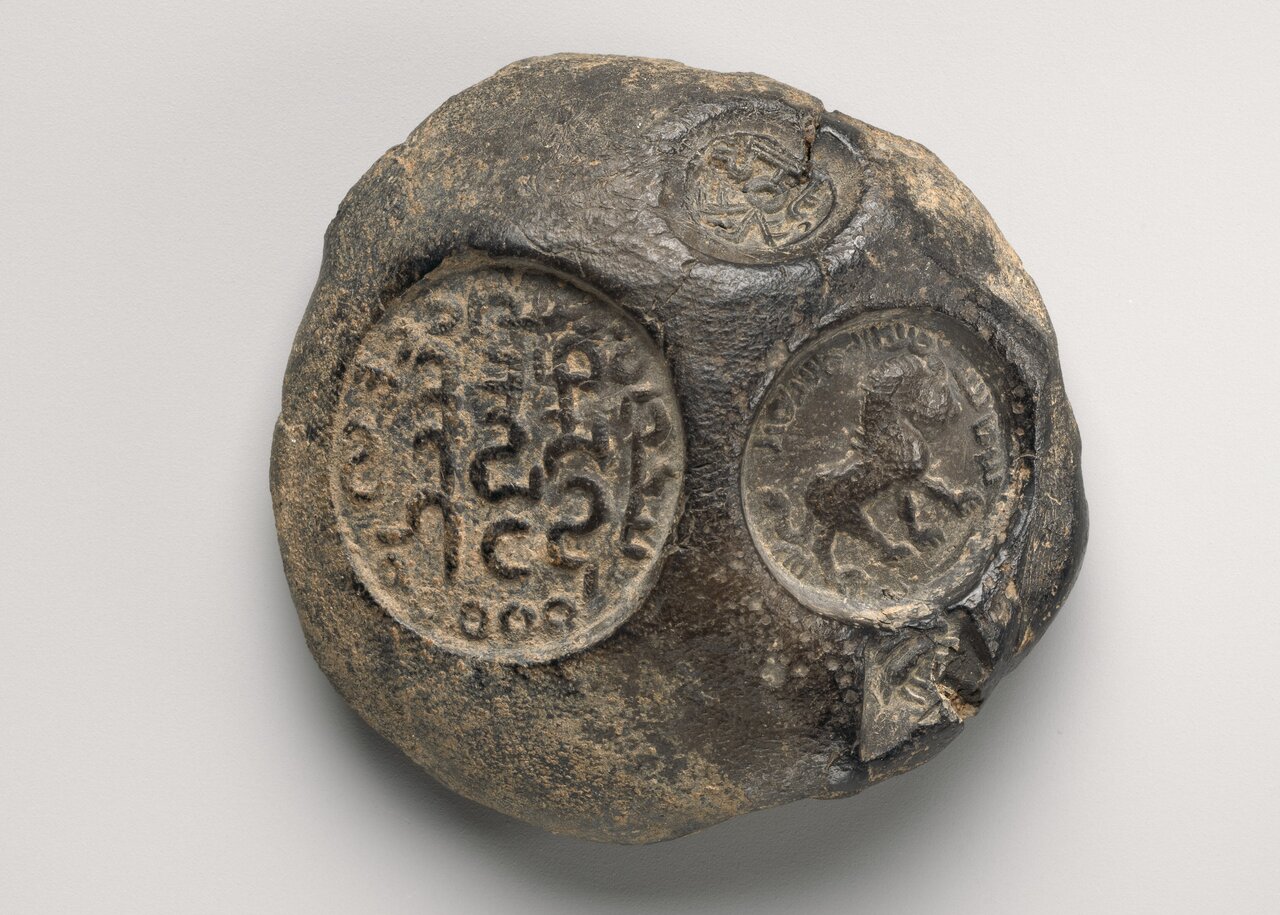Name Shiraz identified on clay seal of Sassanids, archaeologist says

TEHRAN - In a remarkable archaeological revelation, the name “Shiraz” has been identified in Pahlavi script on a Sassanid-era clay sealing.
The finding is important due to cementing the history of Shiraz, which is situated some 60 km south of Persepolis, once the ceremonial capital of the Achaemenid Empire (c. 550–330 BC).
The sealing, excavated near the city of Shiraz at the site of Qasr-e Abu Nasr, is being kept at the Metropolitan Museum of Art in New York.
On Saturday, Iranian archaeologist Mohammadreza Nasab-Abdollahi affirmed to ISNA news agency that the inscription “Mugh-e Shiraz” has been deciphered on these Sassanid clay sealings.
Explaining further, the member of the Iranian Society of Archaeology described such sealings as pieces of clay of various dimensions and shapes, crafted to seal documents and goods. These sealings were imprinted with a seal, leaving an indelible mark on the clay.
“These clay sealings, due to their firing process, have a remarkable durability,” Nasab-Abdollahi added.
He noted that these sealings were unearthed during three seasons of archaeological excavations by experts from the Metropolitan Museum of Art, conducted from 1932 to 1935.
According to Nasab-Abdollahi, archaeological investigations indicate that Qasr-e Abu Nasr in Shiraz exhibits a cultural sequence from the Achaemenid to the Abbasid period, with its primary settlement dating back to the Sassanid era.
“The archaeological findings from Qasr-e Abu Nasr reveal a wide spectrum of administrative systems, techniques, and defensive structures,” the archaeologist remarked.
Furthermore, he emphasized that archaeological evidence from the Sassanid period, including such clay sealings, as well as artifacts from the Achaemenid era such as inscribed bricks from Persepolis, corroborates that the city known today as Shiraz bore the same name in antiquity and was among the significant cities of ancient Iran.
According to the Met Museum, this sealing was impressed with four seals of varying sizes. The imagery on the seals depicts a lion walking right, a monogram, an inscription, and a horned quadruped.
The sealing was among over 500 sealings excavated in the Sasanian fortress at the site of Qasr-e Abu Nasr. The cache was preserved because the building had burned, baking the clay and retaining the seal impressions.
These small clay objects played a role in Sasanian administrative practices. A piece of clay is pressed around a cord to close a document or package and then stamped with a seal. In some cases, these removed sealings seem to have been deliberately stored for administrative purposes.
Excavated by archaeologists from The Metropolitan Museum of Art for three seasons from 1932-1935, Qasr-e Abu Nasr is located near Shiraz in southern Iran at a strategic point at the intersection of defensive mountains, available water sources, and along roads entering the Shiraz plain.
The eastern part of Qasr-e Abu Nasr is a raised plateau of a roughly triangular shape. During the Sasanian period, the plateau was fortified by a wall and densely occupied. Archaeological finds from the fortress show a wide range of defensive and administrative practices.
Celebrated as the heartland of Persian culture for over 2000 years, the capital city of Shiraz has become synonymous with education, nightingales, poetry, and crafts skills passed down from generation to generation.
Shiraz was occupied, at least intermittently, from the Parthian period (3rd century BC–3rd century CE) to the Muzaffarid period (13th-14th century CE). The major occupation, including the extensive fortress, dates to the Late Sasanian period (6th-7th century CE).
It was one of the most important cities in the medieval Islamic world and was the Iranian capital during the Zand dynasty from 1751 to 1794. Moreover, Shiraz is home to some of the country’s most magnificent buildings and sights. Increasingly, it draws more and more foreign and domestic sightseers flocking to this provincial capital.
Eram Garden, Afif-Abad Garden, Tomb of Hafez, Tomb of Sa’di, Jameh Mosque of Atigh, and Persepolis are among the historical, cultural, and ancient sites of Shiraz that are of interest to domestic and foreign tourists. The ancient city is also home to some magnificent historical gardens such as Bagh-e Narenjestan and Eram Garden, which are top tourist destinations both for domestic and international sightseers.
AM
Leave a Comment